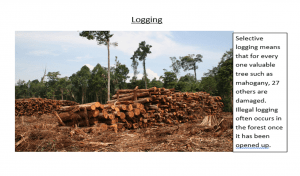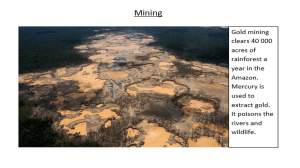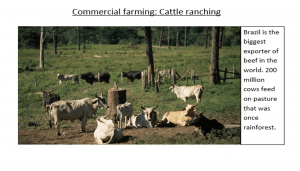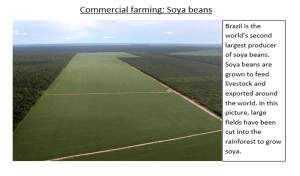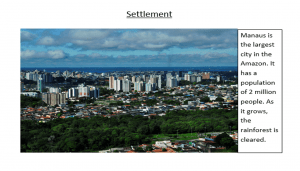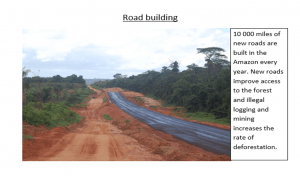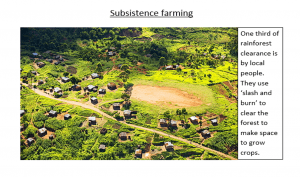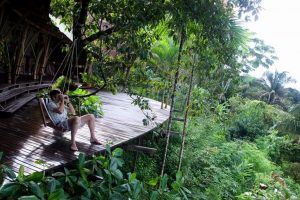CASE STUDY
The largest rainforest is the Amazon Rainforest in South America.
The Amazon rainforest in 1970 covered 4 000 000km2. Today it covers 3 300 000km2.
The graph above shows that the rate of deforestation is generally decreasing. In 2016 8000km2 of rainforest was lost compared to 29 000km2 in 1995.
Causes of deforestation
Commerical farming is when you grow crops to sell and make a profit.
Subsistence farming is when you grow crops just for family.
Effects of deforestation
| Deforestation increases carbon dioxide in the atmosphere because there are fewer trees absorbing CO2. | Deforestation leads to soil erosion because there are no roots to hold the soil together. | Deforestation means less water released back to the atmosphere from trees. This means rainfall on the equator is reduced. |
| The Amazon rainforest creates 20% of the oxygen in the atmosphere through photosynthesis. | Deforestation means lost habitats. It is estimated that up to 40% of Amazon species may be lost by 2030. | Deforestation means a loss of land for indigenous tribes. There are 215 different tribal groups in Brazil whose existence is threatened. |
| Deforestation in the Amazon alone contributes 12% of the extra greenhouse gases in the atmosphere each year. | More soil erosion leads to reduced water quality as rivers and lakes fill with sediment. This will affect aquatic life. | Declining rainfall on the equator leads to rainforests being replaced by grasslands. This will affect habitats and biodiversity. |
| Less rainfall on the equator means drier vegetation and a greater risk of forest fires. | Increasing greenhouse gases leads to global warming by trapping more long wave energy in the atmosphere. | Deforestation creates a short lived economic boom for some people – especially farmers, loggers or miners. |
Sustainable ways to manage the rainforest
Selective logging removes only a few trees in an area of rainforest. In the Talamanca Rainforest in Costa Rica buffalo are being used to pull fallen trees from the rainforest. This causes far less damage to the forest than a bulldozer. This provides a living for people today but protects the forest for the next generation.
Agroforestry is another way to earn a living without chopping  the forest down. Crops, such as fair trade bananas, coffee and cocoa can be grown amongst the trees of the rainforest. This preserves habitats, reduces soil erosion, maintains nutrients and provides a living for farmers.
the forest down. Crops, such as fair trade bananas, coffee and cocoa can be grown amongst the trees of the rainforest. This preserves habitats, reduces soil erosion, maintains nutrients and provides a living for farmers.
Eco-tourism generates jobs for local people without the need for deforestation. People can work in hotels or as tour guides in eco-lodges in the forest.
Debt swap – sometimes a HIC, like the USA, agrees to wipe out the debt from a LIC, like Indonesia. They money that would have gone to repay the loan, instead goes to help local people and conservation.
International agreements have reduced the amount of illegal logging 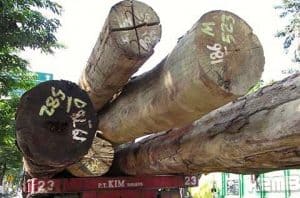 because all timber sold should have special markings to show its has been cut down legally.
because all timber sold should have special markings to show its has been cut down legally.

